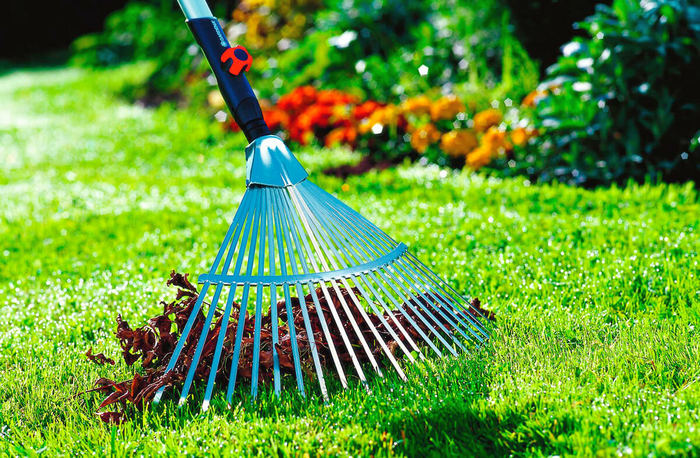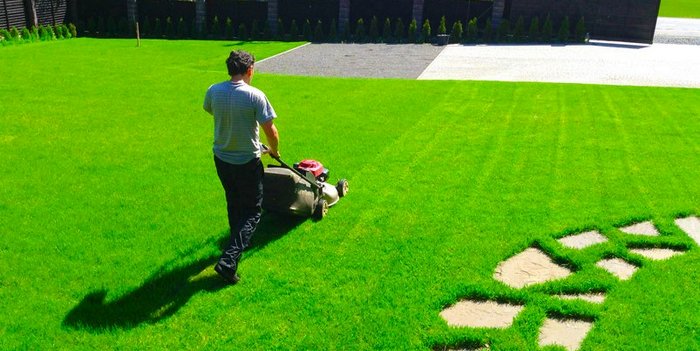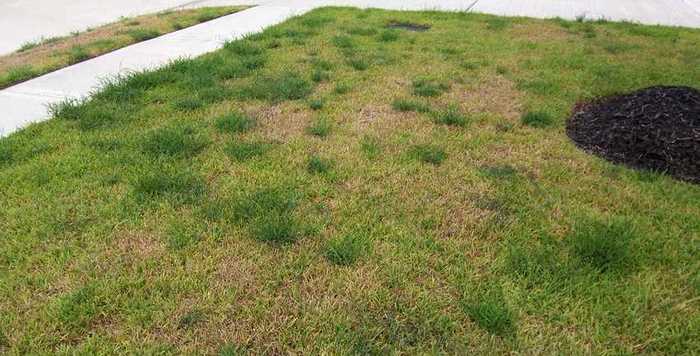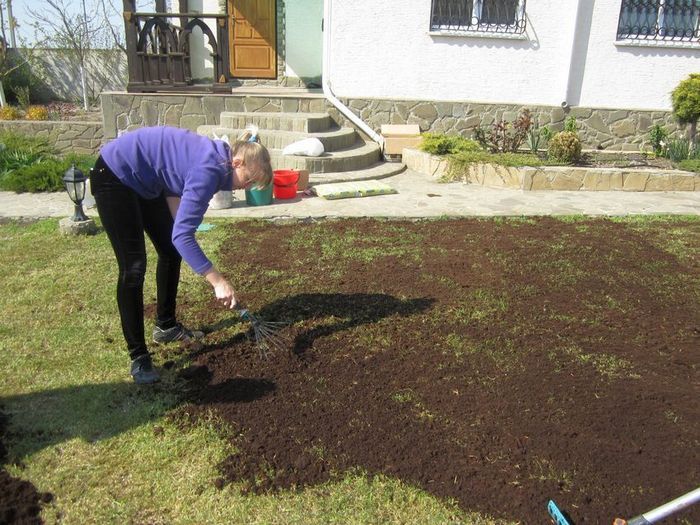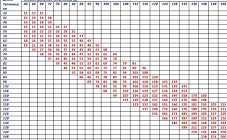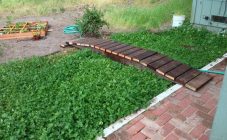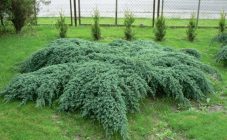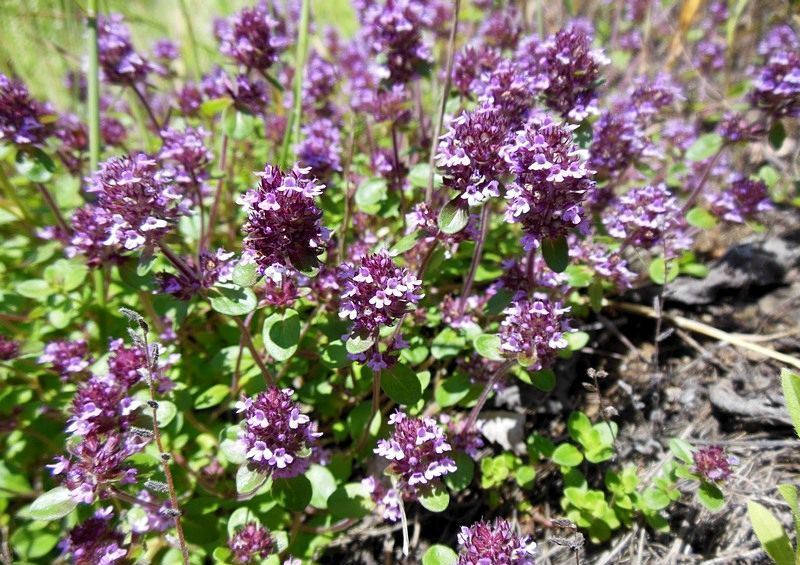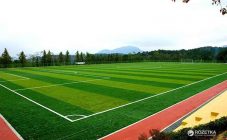Content:
Over the past several decades, the lawn has been an integral element in the landscape design of every second personal plot. Thanks to the beautiful design of the lawn grass, any yard will become even more attractive and original. It should be noted that lawn grass is designed not only to perform a protective function, but also to grow, retaining moisture in the ground and preventing it from drying out.
Description of the lawn: the herbs that make up
When choosing grass for a lawn, you need to pay attention to factors such as the type of soil, the purpose of the lawn coverage, the level of groundwater and the climatic conditions of the regions, including the Moscow region. For sowing ordinary areas, in most cases, several varieties of herbs are used at once, which contribute to the formation of a dense cover. If you use several varieties of grass mixture, the appearance of the coating will become much more attractive, and it will be almost impossible to trample it.
Parterre lawns often include low-growing varieties of grasses, such as red fescue, common bent and perennial chaff. The main advantage of the meadow type of lawn cover is its resistance to various types of diseases. A number of crops that meet this requirement include clover, perennial ryegrass, bluegrass, white bent grass, timothy and meadow foxtail. As for the grass mixtures that are sown on sports grounds, they usually include:
- meadow bluegrass;
- red fescue;
- perennial chaff.
When sowing a sport lawn, pay particular attention to how the soil is drained. Roll turf, which can be found in specialized stores, is also perfect for decorating sports fields.
Growing features: how to care for the lawn after planting
The best time to sow your lawn is early spring or the first half of autumn. This procedure must be carried out after the last layer of snow has melted. Mid-September is the deadline for sowing - it is before this moment that all work should already be completed so that the grass has time to grow a little before the onset of winter. It is recommended to prepare the land plot before sowing.
Experts advise sowing the seeds of this or that lawn grass in slightly damp soil, but you need to be careful so that it is not soggy. If the soil is not sufficiently moistened or too dry, it must be watered abundantly. Start sowing only after the top layer of the earth has dried. The correct lawn planting algorithm is as follows:
- At the initial stage, you need to weigh the amount of planting material that is needed to sow a certain area of the land.
- The measured amount of seeds must be divided into several equal parts, the amount of which may depend on the size of the lawn cover.
- The area on which it is planned to sow the lawn should be divided into an equal number of parts. Using shallow grooves, it is recommended to mark the boundaries between the parts.
- In order to sow the seeds correctly, they need to be picked up in your hand, and then poured in an even layer onto the allocated area. This procedure should be carried out at a distance of 1 m above the topsoil.
To create optimal conditions that are necessary for germination and further growth of the lawn, you will need to regularly moisten the surface layer of the soil after planting. It is necessary to water the lawn once a day, and it is advisable to do this in the evening, since it is in the evening that the evaporation of water is minimized. At high temperatures, the lawn must be covered because direct sunlight can harm it.
How to care for your lawn in spring
As soon as the temperature is stable and the top layer of grass is dry, you can start restoring the lawn coverage after wintering. Sod care with the onset of spring consists of such steps as brushing the lawn, aerating, sowing new seeds (if necessary) and feeding.
It is necessary to comb out the lawn with a fan or simple rake, but before that you need to remove all fallen leaves and other debris that has accumulated on the site over the winter. The accumulated grass should be raked into one pile and burned (can be carried to the compost pit). As for aeration, this is a procedure during which the upper and lower layers of the lawn cover are enriched with oxygen. This is necessary in order to provide air access to the root system of the grass, which contributes to its rapid growth.
An important element of spring lawn care is top dressing. You need to feed the grass with any fertilizer that contains nitrogen and peat. It is recommended to use urea or ammonium nitrate, as well as a complex of special mixtures for growing green mass.
Summer lawn care
The most traumatic season for lawns is summer. In the summer season, due attention should be paid to feeding and regular watering, since it is in the summer that there is a high risk that the sod may overgrow, lose its decorative properties, and overgrow with weeds. So, lawn care with the onset of summer consists of the following procedures:
- Watering abundantly, which should be regular.
- Top dressing with the use of complex fertilizers, which must be carried out in the second half of the summer.
- Lawn mowing with a lawn mower.
- Treating the turf with fungicides if there are signs of a fungal disease.
Particular attention should be paid to the lawn in August, since on the eve of autumn it is necessary to fully prepare it for frost. If the lawn is weakened, you need to feed it with universal fertilizer in the first half of August. If a fungal infection is found again, it is necessary to re-treat the lawn with a fungicide immediately.
Lawn grass care in the fall and preparation of the lawn for winter
In the autumn, before frost sets in, all accumulated debris, weeds and fallen leaves should be removed from the lawn cover. Mowing the lawn in September should be carried out no more than once every two weeks, and in the second half of October to be guided by the rate of sod growth, as well as by weather conditions. The last procedure for feeding the lawn in the fall should be carried out no later than the end of October, but if the autumn is relatively warm, you can feed the lawn in November.
Aeration should be carried out only in the presence of waterlogging caused by heavy rainfall or excessive compaction of the lawn coverage. Also in the fall, a thorough scarification of the lawn should be carried out. If there are bald patches, bumps or bare areas, sow the mixture where necessary.
Problems when growing a lawn
When growing a lawn, you can face a number of problems that make your lawn look ugly and unkempt. The most common problems include infrequent and weak seedlings, and bald spots caused by extreme weather conditions.
As for weak seedlings, you should immediately ask yourself why they appeared. Weak seedlings can be triggered by an incorrect calculation of the optimal consumption of planting material for sowing a lawn cover. Another possible reason for rare seedlings is birds. After sowing, birds can feed on seeds, which causes bald spots in certain places. In order to prevent this problem, it is recommended to sow encapsulated or pelleted seeds.
It is worth noting that the formation of a loose grass cover can be caused by insufficient and poor-quality preparation of the land plot. It is possible to prevent the formation of bald spots by feeding the lawn, but, unfortunately, it is impossible to completely remove this problem.
Lawn mulching
The procedure for mulching the lawn cover should be carried out every year. It is best to take care of this in early May or late September. Before mulching the turf, applying a new nutrient layer, you need to carefully comb out the lawn and carry out aeration. To prepare the mulch, you need a large trough, and you need to mix it with a shovel.
For every square meter of lawn grass, at least 1.5 kg of mulch should be applied - this is a generally accepted norm. In the process of mulching, it is necessary to carefully monitor that the grass shoots are not completely covered. The mulch will need to be leveled with a broom or soft rake to avoid possible dents and bumps.
The lawn is endowed with a protective and decorative function. Today there are a huge number of different varieties of grass mixtures, when choosing which it is imperative to be guided by certain factors. A novice gardener and summer resident definitely needs to know how to prepare a lawn for winter. If, in the process of sowing and further care for the lawn, you follow all the recommendations, then you can successfully grow a thick and dense lawn, which will become a decoration of the summer cottage.


